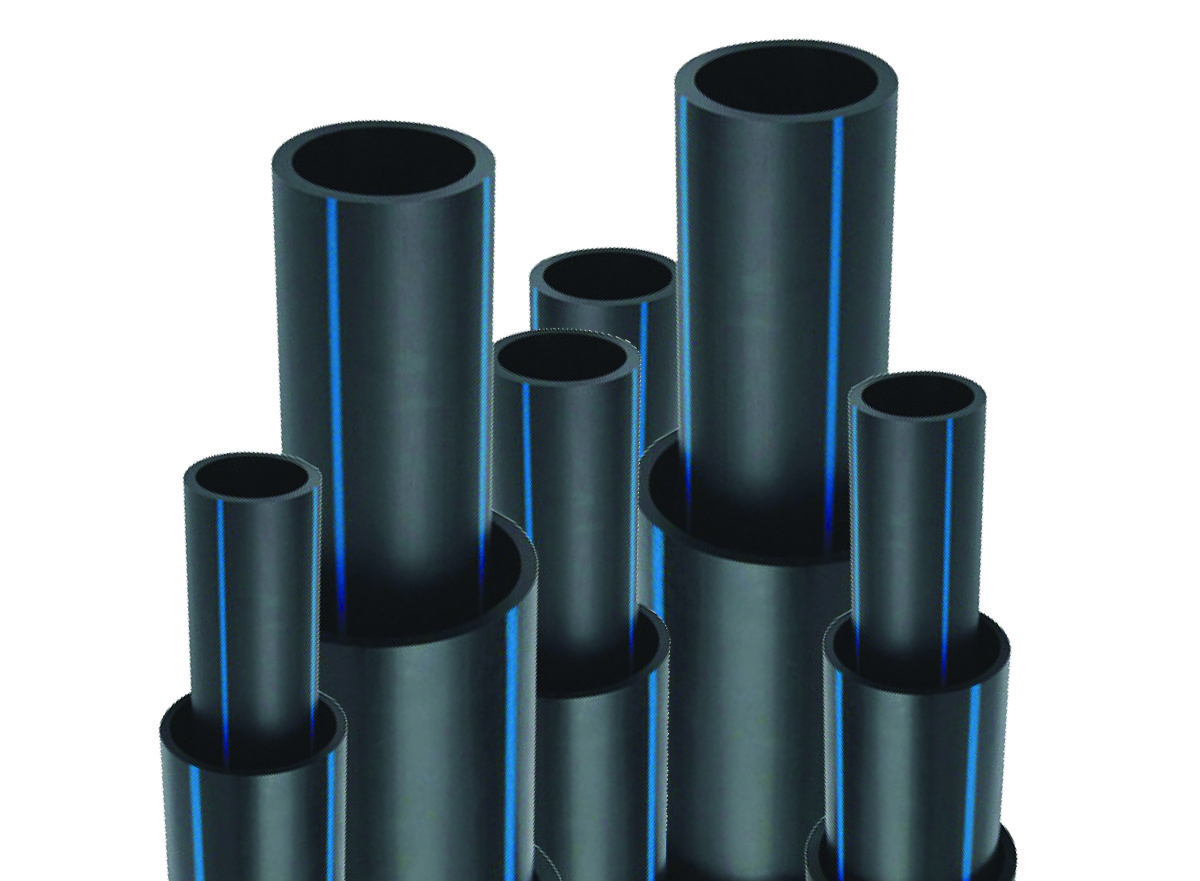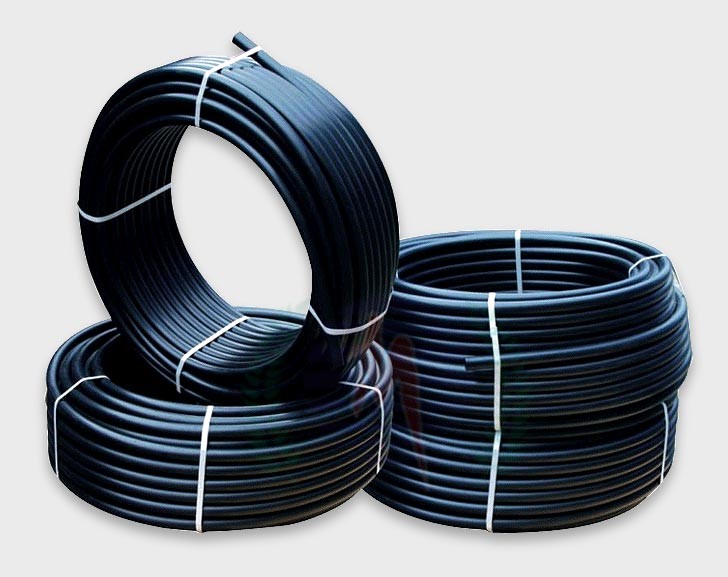Discover the Manufacturing Process Behind High-Quality HDPE Pipeline and Its Applications
The production process of high-grade HDPE pipelines is intricate and methodical. It begins with the option of resources that boost performance. Following this, ethylene goes through polymerization to form resin, which is after that shaped through extrusion. Quality assurance is vital, making certain that the final item fulfills stringent requirements. The journey of HDPE pipes does not end with production. Their applications throughout different industries disclose a more comprehensive significance worth analyzing.
Understanding HDPE: Features and Advantages

High-density polyethylene (HDPE) is a versatile polycarbonate known for its sturdiness and resistance to various environmental elements. This material displays outstanding tensile toughness, making it appropriate for requiring applications. Its low-density framework adds to a light-weight item, facilitating convenience of taking care of and installation. HDPE additionally showcases remarkable resistance to chemicals, which reduces destruction when exposed to extreme materials.
The product's reduced dampness absorption additionally boosts its durability, making it optimal for usage in pipelines and storage tanks. Additionally, HDPE is resistant to ultraviolet (UV) radiation, making sure that products keep their honesty also when subjected to sunshine. Its versatility allows for the creation of detailed forms without compromising stamina. The green nature of HDPE, frequently derived from recycled products, includes in its appeal, advertising lasting practices in production. In general, these buildings and benefits make HDPE a favored option for various industrial and customer applications.
Raw Product Option for HDPE Manufacturing
The choice of resources for HDPE production is important to validate the final item meets the desired requirements and high quality criteria. High-density polyethylene (HDPE) is largely generated from polymerized ethylene, derived from nonrenewable fuel sources such as gas or unrefined oil. The high quality of these feedstocks substantially influences the mechanical and thermal residential properties of the last HDPE.
Additives also play a substantial function in boosting HDPE's efficiency, including anti-oxidants, UV stabilizers, and colorants, which improve sturdiness and resistance to environmental factors. The option procedure must take into consideration not only the chemical composition of the raw products but additionally their handling attributes to guarantee efficient production.
Additionally, the sourcing of raw materials ought to prioritize sustainability and compliance with ecological regulations, as responsible practices are crucial in today's market. Ultimately, mindful basic material choice lays the structure for producing premium HDPE pipelines appropriate for varied applications.
The Extrusion Refine: Forming HDPE Pipe
The extrusion procedure plays a crucial role fit HDPE pipelines, beginning with thorough material preparation methods that guarantee excellent circulation and consistency. Similarly important is the design of the die, which straight affects the last measurements and surface area quality of the pipeline. Together, these aspects add considerably to the performance and top quality of HDPE pipe production.
Product Prep Work Strategies
Reliable production of HDPE pipes starts with meticulous product preparation techniques, particularly the extrusion process. During this stage, high-density polyethylene material is initial dried out to get rid of moisture, ensuring perfect circulation qualities. The material is after that fed right into the extruder, where it undergoes home heating and melting, changing right into a thick state. This heating process is thoroughly regulated to preserve the material's integrity and performance. The liquified HDPE is forced via a die, shaping it right into a continual pipeline form. Appropriate temperature administration during extrusion is crucial, as it directly influences the material's homes and the end product high quality. As soon as shaped, the HDPE pipeline is cooled down and reduced to defined lengths, ready for succeeding processing and applications.
Die Layout Significance
Accuracy in die style plays an important role in the extrusion process of HDPE pipelines. The die functions as the last shaping tool, straight influencing the pipeline's measurements, wall surface density, and surface coating. A properly designed die warranties consistent product circulation, lowering flaws such as irregularities and weak points. The geometry of the die need to be maximized to fit the details properties of HDPE, including its thickness and thermal behavior throughout extrusion. In addition, the cooling price of the material as it passes via the die can noticeably affect the pipe's structural stability. Spending in innovative die innovation is crucial for suppliers aiming to produce top quality HDPE pipes that satisfy market criteria and client expectations.
Quality Control Measures in HDPE Production
Various aspects affect the high quality of HDPE pipeline manufacturing, efficient high quality control steps are important to ensure uniformity and integrity in the last product (American Plastics HDPE Pipe Manufacturing). Secret quality assurance practices consist of extensive material examination, confirming that the raw polyethylene meets well established requirements for purity and density. During the extrusion process, parameters such as temperature, pressure, and cooling time are carefully kept track of to keep dimensional precision and architectural stability
On top of that, post-production testing is important; producers typically perform hydrostatic examinations to evaluate the pipeline's stamina and resistance to pressure. Aesthetic examinations for surface problems further enhance quality control. Certification from pertinent requirements companies, like ASTM or ISO, gives an extra layer of reliability. By implementing these extensive high quality control measures, suppliers can minimize issues, boost performance, and make sure that the HDPE pipes fulfill the specific needs of various applications, eventually resulting in client fulfillment and rely on the product.
Applications of HDPE Pipeline Across Industries
HDPE pipes are made use of across various markets due to their toughness and flexibility. In water circulation systems, they guarantee effective shipment, while in wastewater management, they provide dependable solutions for waste transportation. In addition, farming watering networks profit from HDPE's resistance to deterioration and flexibility, making it an excellent option for contemporary farming methods.

Water Circulation Equipments
A significant variety of markets count on high-density polyethylene (HDPE) pipelines for reliable water circulation systems. Known for their sturdiness and resistance to corrosion, HDPE pipelines are commonly used in metropolitan water networks, agricultural irrigation, and industrial applications. Their light-weight nature assists in simple handling and setup, decreasing labor prices and time. Additionally, HDPE pipes can accommodate numerous pressure levels, making them appropriate for both low and high-pressure systems. American Plastics HDPE Pipe for Oilfield. The adaptability of the product allows for seamless combination into existing facilities, minimizing the demand for substantial excavation. HDPE's resistance to chemical leaching guarantees that the water supplied stays safe and clean, making it a perfect choice for keeping the quality of safe and clean water across numerous industries.
Wastewater Monitoring Solutions
Efficient water distribution systems also lead the way for cutting-edge wastewater management solutions, where high-density polyethylene (HDPE) pipes play a significant role. Renowned for their resilience and resistance to corrosion, HDPE pipes are ideal for carrying wastewater in various settings. Their adaptability enables very easy installment in intricate atmospheres, reducing the requirement for substantial excavation. Additionally, HDPE's smooth indoor surface lowers rubbing, boosting flow prices here and performance. These pipes are likewise immune to chemical leaching, making certain that impurities do not jeopardize the surrounding setting. Industries, districts, and treatment facilities increasingly depend on HDPE pipelines for their reliability and long life, making them a recommended selection for modern-day wastewater monitoring systems. This versatility emphasizes the essential relevance of HDPE pipelines across numerous applications.
Agricultural Watering Networks
Agricultural irrigation networks benefit significantly from making use of high-density polyethylene (HDPE) pipelines, which give effective and trustworthy water delivery to plants. HDPE pipes are light-weight, making them simple to deliver and mount, while their flexibility permits numerous configurations in varied terrains. These pipelines demonstrate superb resistance to rust, chemicals, and UV radiation, guaranteeing longevity in rough agricultural settings. Additionally, their smooth indoor surface area lessens friction loss, optimizing water flow and reducing power prices connected with pumping. The long life of HDPE pipelines, frequently going beyond half a century, adds to reduce upkeep and substitute expenses. Consequently, farmers progressively depend on HDPE pipelines to boost irrigation efficiency and advertise lasting farming practices, inevitably causing boosted plant returns and resource preservation.
Future Patterns in HDPE Pipeline Technology
As the demand for sustainable and effective facilities expands, innovations in HDPE pipe technology are positioned to change numerous markets. Arising patterns consist of the combination of wise innovations, such as sensors and IoT abilities, which assist in real-time surveillance of pipe conditions, reducing upkeep expenses and preventing leaks. Additionally, the advancement of advanced production methods, such as 3D printing, is allowing the manufacturing of facility, personalized pipeline styles that accommodate details job demands.
The focus on recycling and round economic climate methods is driving the development of HDPE pipelines made from recycled materials, enhancing sustainability. Improved jointing methods, such as electro-fusion and mechanical installations, are likewise improving setup effectiveness and integrity. The growing focus on ecological regulations is pressing manufacturers to adopt greener manufacturing procedures, making certain that HDPE pipelines not just fulfill sector criteria but also promote an even more sustainable future for facilities advancement.
Regularly Asked Concerns
Just How Does HDPE Contrast to Other Plastic Materials?
HDPE exceeds many other plastic materials concerning durability, chemical resistance, and adaptability. Its reduced density and high tensile stamina make it suitable for numerous applications, typically surpassing choices in both performance and longevity.
What Are the Environmental Impacts of HDPE Production?
The ecological impacts of HDPE production include greenhouse gas emissions, energy consumption, and prospective contamination from producing processes. Furthermore, incorrect disposal can lead to dirt and water contamination, elevating concerns regarding long-term environmental impacts.
Can HDPE Piping Be Reused?
Yes, HDPE pipelines can be recycled. Several facilities accept utilized HDPE for handling, transforming it into brand-new items. This recycling adds to sustainability initiatives, lowering plastic waste while preserving resources and energy in the production cycle.
What Is the Life-span of HDPE Pipes?

Exactly How Do Temperature Variations Influence HDPE Pipe Efficiency?
Temperature variations greatly affect HDPE pipeline efficiency, influencing flexibility and strength. Heats can result in softening, while reduced temperature levels may create brittleness, ultimately influencing the pipeline's durability and suitability for various applications in varied environments.